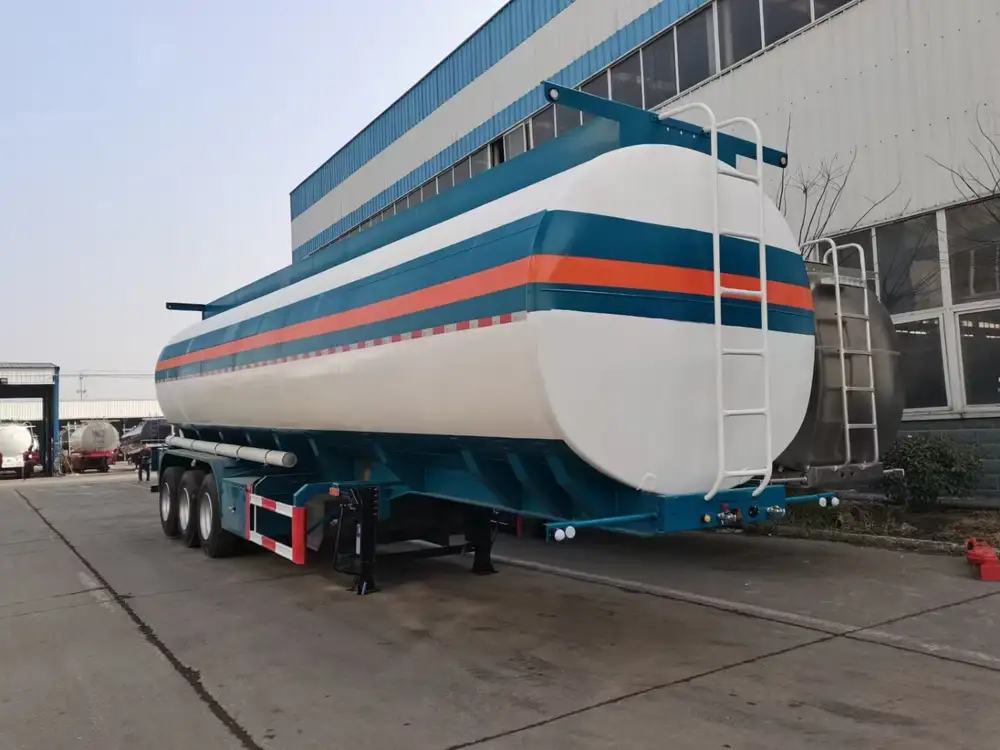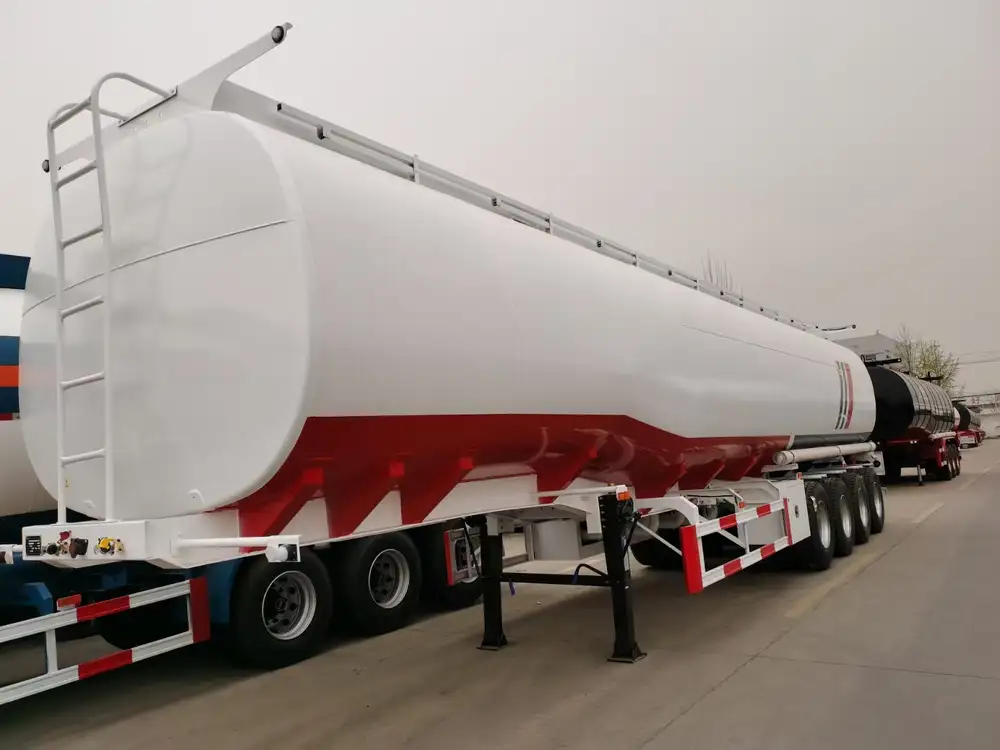In the vast landscape of transportation and logistics, semi-trailers serve as vital workhorses, enabling the efficient movement of goods across diverse terrains. Among the various types of semi-trailers, flatbed trailers hold a unique position due to their flexibility and utility. This article explores the dimensions of standard flatbed 18-wheeler trailers, their applications, and key considerations for businesses relying on them.
What Is a Flatbed Trailer?
A flatbed trailer is characterized by a completely flat, open deck without sides or a roof, making it ideal for hauling a wide range of cargo, including construction materials, machinery, and oversized goods. The design of flatbed trailers allows for easy loading and unloading from any side, offering a level of accessibility that enclosed trailers simply cannot.
Dimensions of Flatbed Trailers

Standard Lengths and Widths
The standard dimensions for flatbed 18-wheeler trailers have been established to optimize compatibility with various freight types while adhering to legal regulations. Below is a detailed breakdown of the typical dimensions:
| Parameter | Measurement |
|---|---|
| Length | 48 to 53 feet |
| Width | 8.5 feet (102 inches) |
| Height | Approximately 5 feet (depends on load) |
| Weight Capacity | Generally between 48,000 and 50,000 pounds |
It is essential to note that while 48-foot trailers are common, 53-foot flatbeds are becoming increasingly popular due to their ability to accommodate larger loads, making them a preferred choice for many shippers.
Variations in Length
While the 48- and 53-foot trailers dominate the standard flatbed market, various other lengths exist to cater to specific needs:
- 40 Feet: Often utilized for smaller loads or specific regulations pertaining to certain regions.
- 45 Feet: A compromise between long loads and limited loading docks.
- 60 Feet: Typically used for oversized loads requiring special permits.
Special Considerations: Height and Weight
The height of a flatbed trailer can vary based on the load it carries, but it is governed by strict regulations. The overall height while loaded must not exceed 13.5 feet for road travel within the United States, adhering to local and state regulations. This ensures both safety and compliance during transport.
Weight capacity plays a critical role in the selection process of a flatbed trailer. The Gross Vehicle Weight Rating (GVWR) should be well-understood by logistics managers and drivers to prevent overloading, which can lead to fines and safety hazards.

Why Choose Flatbed Trailers?
Flatbed trailers come with a plethora of advantages, making them an excellent choice for businesses that need efficient and reliable transportation solutions.
Flexibility in Loading
The open design allows for easy loading and unloading, particularly advantageous for transporting:
- Heavy machinery
- Construction materials (like lumber or steel beams)
- Palletized cargo
Versatility for Different Cargo Types
Flatbeds can accommodate a wide variety of cargo, which includes:
- Vehicles (e.g., cars and trucks)
- Oversized or irregularly shaped goods
- Containers of varying types

Reduced Freight Handling Costs
Using flatbed trailers minimizes the need for specialized loading equipment, which can reduce overall handling costs while increasing efficiency. When it comes to moving large quantities of goods, cost-effectiveness is paramount.
Key Features of Flatbed Trailers
When choosing a flatbed trailer, it’s crucial to understand the key features that can affect usability, efficiency, and safety.
Types of Flatbed Trailers
Standard Flatbeds: These are the most common types used across industries.
Step Decks (or Drop Decks): Designed with a drop-off that allows for taller cargo, these trailers can decrease overall height while maintaining load capacity.
Double Drop Trailers: With two drops, they allow for exceptionally tall loads, though they are less common due to their complexity.

Tie-Down Systems
Flatbed trailers must include secure tie-down systems for safe transport. This can include:
- D-rings: Mounted on the trailer for adjustable securing points.
- Tarps: To protect loads from weather conditions.
- Straps and Chains: Essential for securing cargo during movement.
Compliance and Safety Standards
Flatbed trailers must meet certain state and federal regulations to ensure safety on the road. Regular inspections are necessary to ensure load security, brake functionality, and compliance with weight regulations.
Pros and Cons of Flatbed Trailers

Advantages
- Ease of Loading: Cargo can be loaded from any direction without the hindrance of walls or roofs.
- Versatility: Ideal for various types of cargo, including oversized and heavy items.
- Cost-Effectiveness: Lower handling costs compared to enclosed trailers.
Disadvantages
- Exposure to Elements: Without the protective structure, cargo is susceptible to weather conditions unless tarped.
- Loading Safety Risk: Unsecured cargo can pose safety hazards during transport.
- Regulatory Limitations: Must adhere to specific regulations regarding height and load distribution.
Comparison with Other Trailer Types
To fully understand the advantages of flatbeds, let’s compare them with enclosed and refrigerated trailers:
| Feature/Type | Flatbed | Enclosed | Refrigerated |
|---|---|---|---|
| Loading Accessibility | High | Limited | Limited |
| Cargo Variety | Very High | Moderate | Specific to perishables |
| Cost | Good (Lower Costs) | Higher (More Protection) | Highest (Cooling Costs) |
| Security | Moderate (Secured with Straps) | High (Locked Enclosure) | High (Temperature Control) |
| Weather Protection | Low | High | High (Controlled Environment) |

Common Questions About Flatbed Trailers
How Do I Choose the Right Size Flatbed Trailer?
Choosing the right flatbed trailer size depends on the nature of your cargo. Considerations include:
- The total weight of the cargo
- The dimensions of your goods
- Legal height and weight restrictions in your operational areas
What Are the Regulations for 18-Wheelers?
Compliance with Department of Transportation (DOT) regulations is crucial for all semi-truck operations, including:
- Weight limits (typically 80,000 pounds on federal highways)
- Height restrictions (generally capped at 13.5 feet)
- Required permits for oversized loads

What Are the Best Practices for Tying Down Cargo?
Secure cargo using a combination of:
- Ratchet straps for heavy loads
- Chain binders for oversized items
- Tarps to provide necessary protection from environmental effects
Using appropriate tie-down techniques not only ensures safety but also prevents potential damage or accidents during transport.
Conclusion
An understanding of flatbed trailer dimensions, advantages, and regulations is essential for businesses engaged in logistics and transportation. The durable and versatile flatbed 18-wheeler trailer has become an indispensable tool for the movement of a diverse array of goods. With its flexible loading opportunities and varied configurations, flatbed trailers are often the transport solution of choice for many logistical needs.
Choosing the appropriate trailer ultimately hinges on a careful consideration of your company’s unique requirements. In doing so, you can make strategic decisions that lead to enhanced efficiency, cost-effectiveness, and successful cargo transport. By prioritizing safe loading practices and staying informed on regulations, your business can leverage the full potential of flatbed trailers while ensuring a compliance-oriented and dependable operation.



